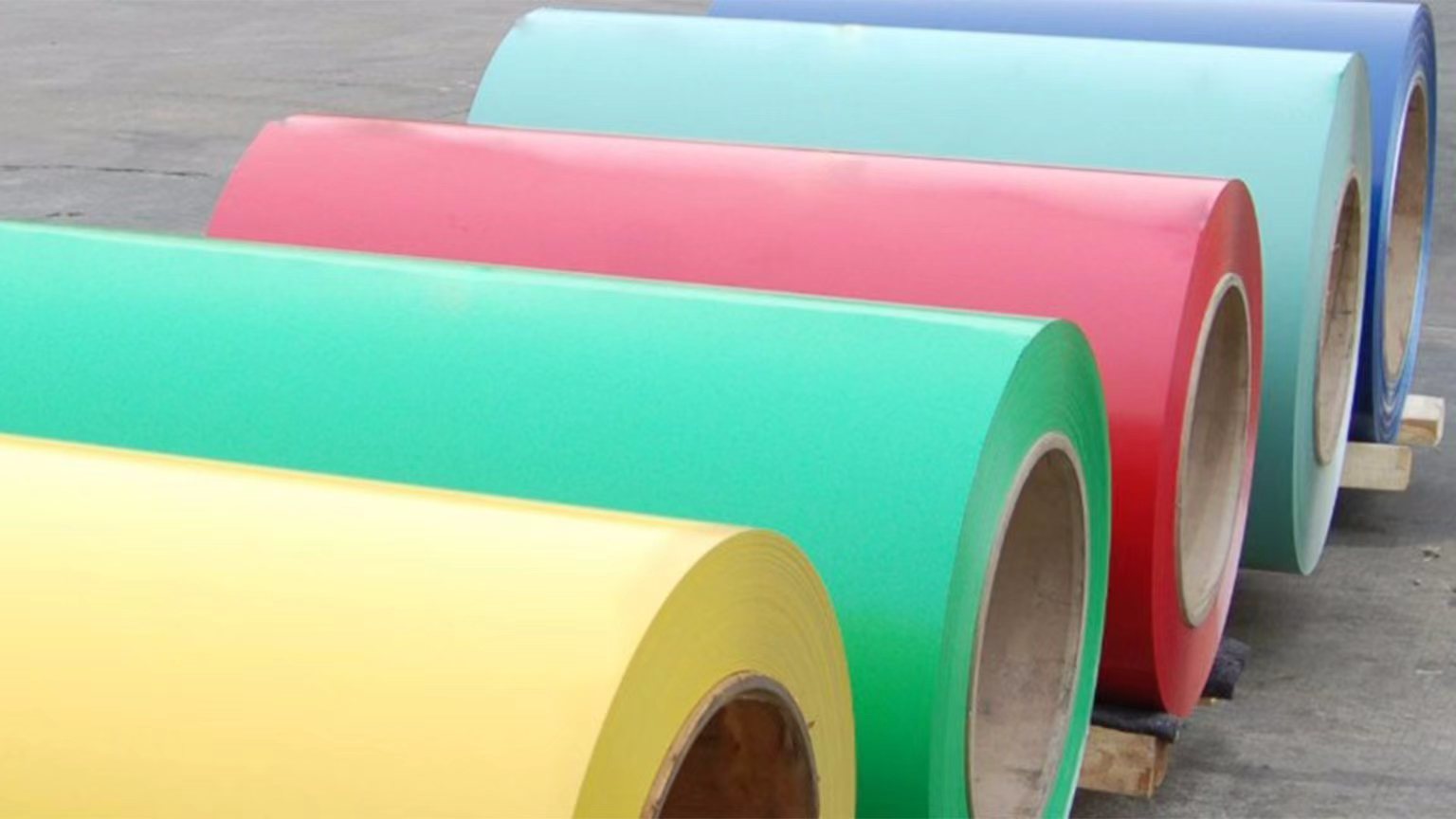Introduction to Color-Coated Rolls
When it comes to "colored coated sheets", most people would think of it as a cold and impersonal industrial term. But what you don't know is that the refrigerator shells you see first thing in the morning, the steel structure overpasses you pass by on your way to work, and even the courier cabinets at the entrance of your neighborhood, all contain its presence. This material, known as "the high-end customized coat for steel", has quietly permeated every corner of life.
Aug 06,2025

When it comes to "colored coated sheets", most people would think of it as a cold and impersonal industrial term. But what you don't know is that the refrigerator shells you see first thing in the morning, the steel structure overpasses you pass by on your way to work, and even the courier cabinets at the entrance of your neighborhood, all contain its presence. This material, known as "the high-end customized coat for steel", has quietly permeated every corner of life.
A steel that can "dress up"
If you take apart the colored coated sheets, it is clearly a meticulously designed "metal sandwich". The innermost base plate is the "tough guy" in the steel world, formed by cold-rolled steel plates or galvanized plates, which constitutes the skeleton of the material and determines its strength. Cold-rolled steel plates have a fine texture and are suitable for making objects with high requirements for flatness such as home appliances; galvanized plates have a built-in basic anti-corrosion layer and are more suitable for outdoor construction. Just like a person needs healthy bones to support the body, the base plate of the colored coated sheets must bear the weight of the roof and resist the impact of typhoons, and both hardness and toughness are indispensable.
The middle layer's coating is the "rust-proof golden cage". The galvanized or aluminized zinc coating is like a fine layer of armor, separating the steel from the humid air. The galvanized coating contains 50-275 grams of zinc per square meter, forming a uniform zinc-iron alloy layer; the aluminized zinc is an alloy of aluminum, zinc, and silicon, with 3-5 times the corrosion resistance of ordinary galvanization. Why are the guardrails by the seaside not rusted for years? The secret lies here - the coating forms a passivation film, even if there are minor scratches on the surface, it can self-repair and prevent rust from spreading.
The outermost layer is a "beauty standard performer" as well as a "protection pioneer". Through precise blending, polyesters and fluorocarbons, among other high-molecular coatings, can produce over a thousand different colors, ranging from the imperial red of the Forbidden City to the deep sea blue, meeting the aesthetic demands of various scenarios. What's more impressive is that these coatings undergo special treatment and can withstand the long-term ultraviolet radiation without fading. Even if they are scratched by hailstones, they won't peel off in patches like ordinary paints. The fluorocarbon coating is particularly robust. Even in the harsh sun exposure of Sanya, Hainan, its color retention rate can still exceed 80% after ten years.
The "makeup production line" for steel
The process of producing colored coated sheets is like giving steel a high-end SPA. The first step is "deep cleaning", where the steel plates go through multiple processes such as degreasing and acid washing to thoroughly remove oil stains and rust. The cleaning solution is controlled at a temperature of 60-80℃, combined with high-pressure spraying, even micrometer-sized impurities can be washed away. Just like preparing for makeup, a clean base is necessary for the subsequent coating to adhere more firmly.
After cleaning, it enters the "base coating stage", where a chemical conversion film forms on the steel plate surface, creating a nanometer-level protective film. This film is almost invisible to the naked eye, but it can increase the adhesion of the coating by more than 30%, like applying a hidden glue to the steel. Common conversion films include chromate and non-chrome passivation, with the latter being more environmentally friendly and becoming the industry standard.
Next is the "application" stage, where both the priming and finishing coating processes are indispensable. The primer is responsible for strengthening the anti-corrosion performance, while the topcoat determines the color and texture. Workers use a roller coating machine to evenly cover the steel plate with the coating, with a thickness of 20-30 micrometers, which is approximately one-third the diameter of a hair. Some high-end products will also add back coating, like wearing "jackets" for the steel plate, further isolating water vapor.
Finally, it is the "high-temperature setting", where the steel plate is "taking a sauna" in a 200℃+ oven. This process lasts for 30-60 seconds, and the high-molecular chains in the coating will cross-link, forming a dense protective film that firmly "locks" the steel. After this treatment, the colored coated sheets can withstand extreme temperatures of -50℃ to 120℃, remaining safe in the cold winters of Northeast China and the hot summers of Hainan.
The "Transformer" hidden in life
In the construction field, colored coated sheets are the "all-rounder". The curved curtain walls of the gymnasium use them as panels, which not only conform to the designer's artistic conception but also can withstand strong wind impacts. The roof of the factory building is covered with color-coated sheets, which can be used for 10 years without renovation and can reduce indoor temperature by reflecting sunlight. What's more, it can be molded into various shapes. The dome of the railway station, the irregular ceiling of the shopping mall, can all be achieved through it. The roof of Beijing Daxing Airport uses light gray color-coated sheets, which not only reduces the load of the building but also echoes the sky's color tone.
The home appliance industry is also inseparable from it. The white coating on the refrigerator door is not only dirt-resistant but also can reflect heat to reduce energy consumption; the silver shell of the washing machine is treated with anti-friction, and its luster will not fade for ten years. Even the inner lining of the microwave oven uses special color-coated sheets - this coating can absorb microwave energy and convert it into heat, and it doesn't stick to oil stains, and it's clean after wiping. The metal shell of high-end rice cookers is also often made of color-coated sheets, which can prevent scratches and maintain bright color.
In the fields of transportation and environmental protection, color-coated sheets also perform well. The panel of the noise barrier on the expressway uses it as a panel, which can not only block noise but also resist the corrosion of vehicle exhaust; the support of the photovoltaic power station is painted with color-coated sheets, and it will not rust even in the wild exposure to the sun and rain, greatly extending the equipment's lifespan. Urban bus stops, bike parking posts, and even garbage classification booths can all see its presence. The guardrail of the sightseeing corridor on the Bund in Shanghai uses weather-resistant color-coated sheets, which remain brand new even after being exposed to the wind of the river all year round.
This seemingly ordinary material actually contains countless technological wisdom. From skyscrapers to household refrigerators, color-coated sheets use their "steel framework" and "beautiful outer layer" to silently support the operation of modern life. The next time you see a steel structure building or the shell of an appliance, you might smile knowingly: This is actually the "invisible giant" hidden in life.
PREVIOUS:



